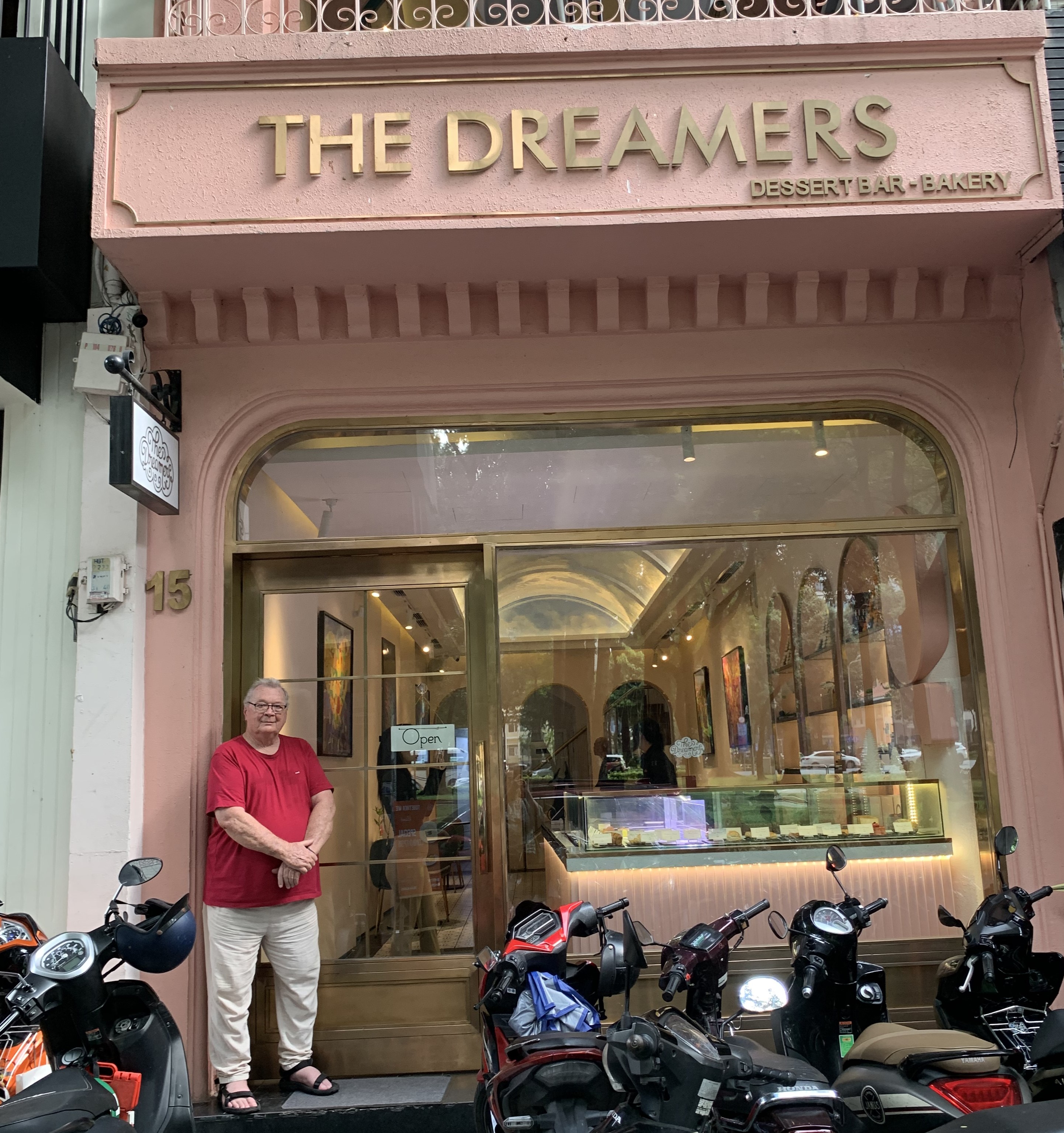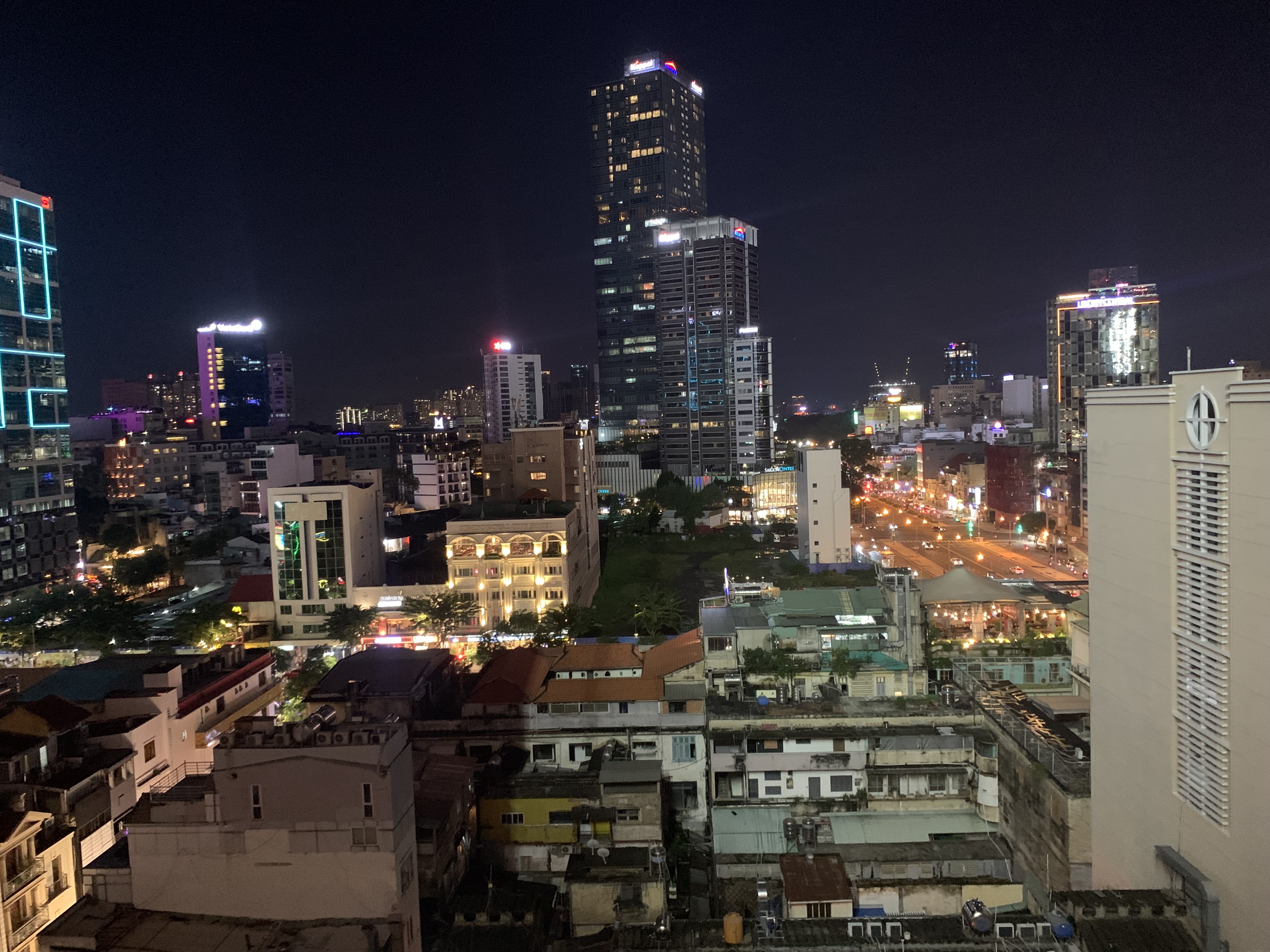Comment
Historic Reuters office building has a sticky ending - but it's still standing
Sunday 21 April 2024
On my return to Ho Chi Minh City (formerly Saigon) for the first time in more than 50 years, I was eager to revisit some of the haunts that had been part of my adventures as a correspondent.
The Continental, Caravelle, Rex and Majestic hotels were landmarks for everyone, but for many journalists the Reuters bureau at 15 Han Thuyen Street was a place of unforgettable memories, both good and bad. 
I had read in a 2010 edition of The Baron a piece by former bureau chief Jim Pringle saying the street, including the bureau’s terrace house, was soon to be demolished and redeveloped.
Redevelopment indeed is changing HCMC at impressive speed, but happily I found recently that it hasn’t reached 15 Han Thuyen yet. It’s still standing, although now it’s a sticky cake shop called “The Dreamers” surrounded by cafes.
It’s easily recognisable, with a central aisle, once flanked by desks, back door on the left leading outside to the former telex room and stairs up to the old bureau chief’s apartment.
Photo: Nixon outside the old office building
I went inside and tried to explain to the two girl shop assistants what this undistinguished little house had meant, how it had been a close witness to historic and violent times for their country, and the place where hundreds of foreign correspondents filed their news to the rest of the world. They were nonplussed. I wondered if they knew much about the war, 50 years after it ended.
As Jim wrote, the bureau was well situated, with views to the left across a park to the presidential palace and to the right, the U.S. embassy. The PTT (post office) was nearby and the city centre, including the venues for the daily “follies” -- military briefings -- and post-follies Continental bar, just a short walk.
South Vietnam was an exciting place for an ambitious young journalist in 1970. I felt I had some of the worst of it, however, as I was embedded for Reuters affiliate Australian Associated Press with the First Australian Army Task Force at Nui Dat, about 80 kms (50 miles) from Saigon, and never quite a free reporting agent. Regular R&R sojourns to the capital gave me a sniff of the real correspondents’ lives and I went on to join the RWS desk at 85 Fleet Street a few years later.
Apart from Pringle and the many other Reuter staffers during the 1960s and 70s, the most significant personality at 15 Han Thuyen was Pham Ngoc Dinh, the renowned office manager, fixer and reporter. Mr Dinh’s desk was immediately on the right inside the double front doors and under his desk’s glass top were the passport photos of scores of foreign correspondents who had used the Reuters filing facilities.

It may be a cake shop now, but at least one of the most historic bureau offices in Reuters lore is still standing.
Photo:Caravelle rooftop, facing Le Loi St
Much of central Saigon remains recognisable despite redevelopment happening all around it. On the stairway to the roof bar of the Caravelle Hotel, once the city’s tallest building, an historical poster records how correspondents gathered there at night to watch the war in progress. The poster shows three of the best-known Associated Press newsmen, journalist Peter Arnett and photographers Horst Faas and Henri Huet.
The roof bar is still there, but its long view is partly obscured by surrounding high-rises that didn’t exist 60 years ago and the bright lights that once were rocket explosions are now just neon.
Chris Nixon was an Australian Associated Press correspondent in Vietnam in 1970, then worked for Reuters World Service on the desk in London from 1974 to 1977. After returning to Australia he spent 30 years in magazine journalism and media management, specialising in motorsport. ■
- « Previous
- Next »
- 35 of 1807